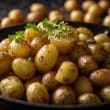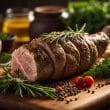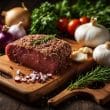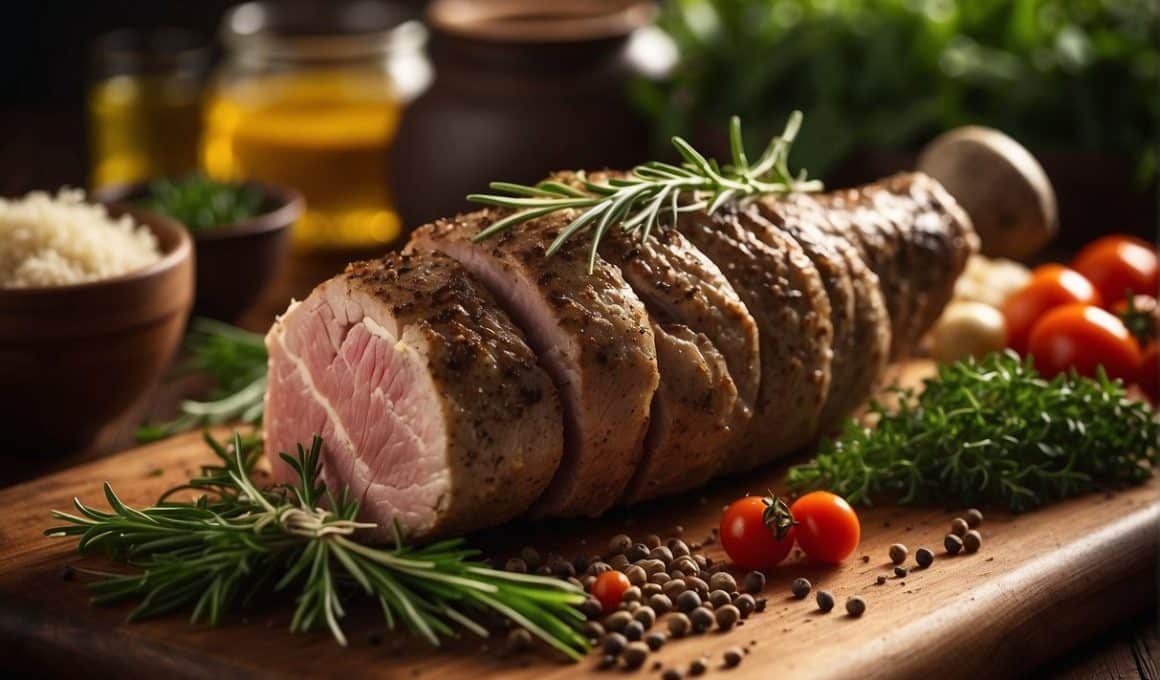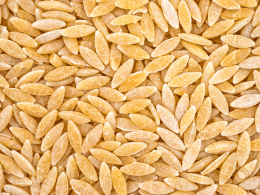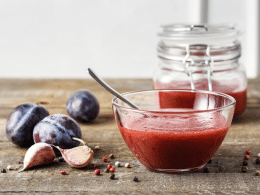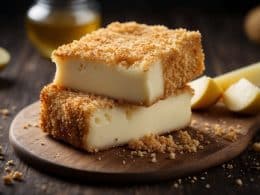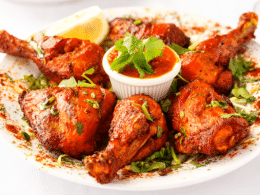A cannon of lamb is a premium cut that offers both tenderness and flavor, making it a sought-after selection for discerning diners and home chefs alike. Extracted from the loin of the lamb, this cut is typically boned and rolled, presenting a neat, cylindrical shape that is both visually appealing and ideal for even cooking. This choice cut is rooted in traditional culinary practices and continues to be a staple for special occasions and gourmet meals.
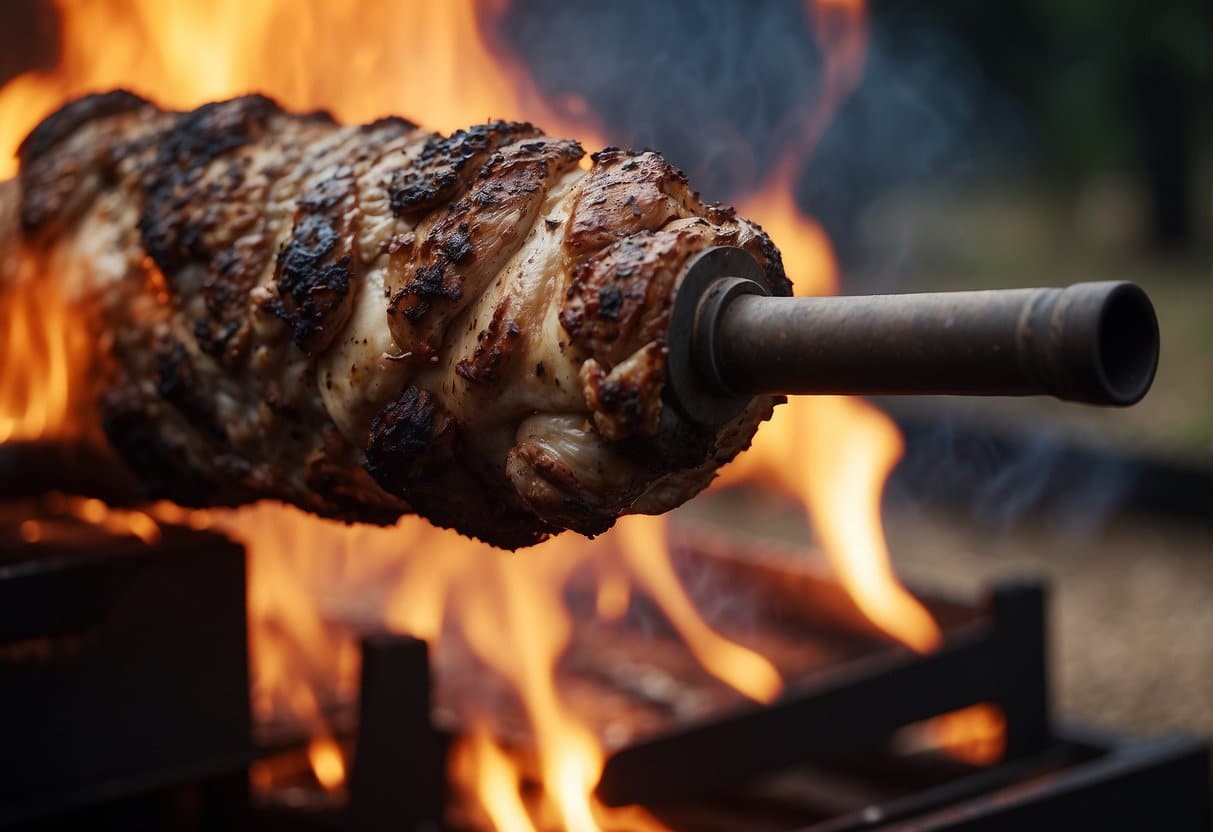
Preparing a cannon of lamb involves various critical steps to enhance its natural flavors. Seasonings play a pivotal role, often including simple ingredients such as salt, pepper, and herbs like rosemary or thyme, which complement the succulent taste of the meat without overwhelming it. Careful cooking, whether roasting or searing, brings out the richness of the meat, while side dishes and accompaniments such as roasted vegetables or a vibrant redcurrant sauce widen the palette of flavors on the plate.
Key Takeaways
- A cannon of lamb is a premium, tender cut from the loin, ideal for special dishes.
- Simple seasonings and herbs complement the rich flavors of the lamb.
- Proper cooking techniques and accompaniments enhance the overall dining experience.
Overview of Cannon of Lamb

When discussing cannon of lamb, I am referring to a prized cut from the loin of the lamb. Boned and often rolled, it’s a portion that highlights the succulence and delicate flavor inherent in quality lamb. Comprising meat primarily from the eye of the loin, it allows for a lean and tender eating experience.
The preparation of this cut is straightforward. After removing the bone and the fell—sheepskin left on the meat—it’s common to roll the meat into a cylindrical shape. This not only makes for uniform cooking but also presents beautifully on a plate. Typically, a cannon of lamb weighs between 12 ounces to 1¼ pounds, which is well-suited for an intimate roast dinner for two.
Lamb loin cannon, also known as loin fillet or lamb fillet, stands out for its leanness, its ability to absorb seasonings, and its quick cooking time compared to other more robust cuts. While it holds the potential to be a delicious centerpiece, care is necessary to avoid overcooking; maintaining its moisture and tenderness is key.
The cut’s versatility is well-noted in culinary circles. It pairs well with a variety of herbs, spices, and accompaniments, making it a favorite for experienced chefs and home cooks alike. Whether simply seasoned with salt and pepper or adorned with more elaborate sauces and sides, the cannon of lamb truly showcases the best of what lamb has to offer.
Ingredients and Preparation
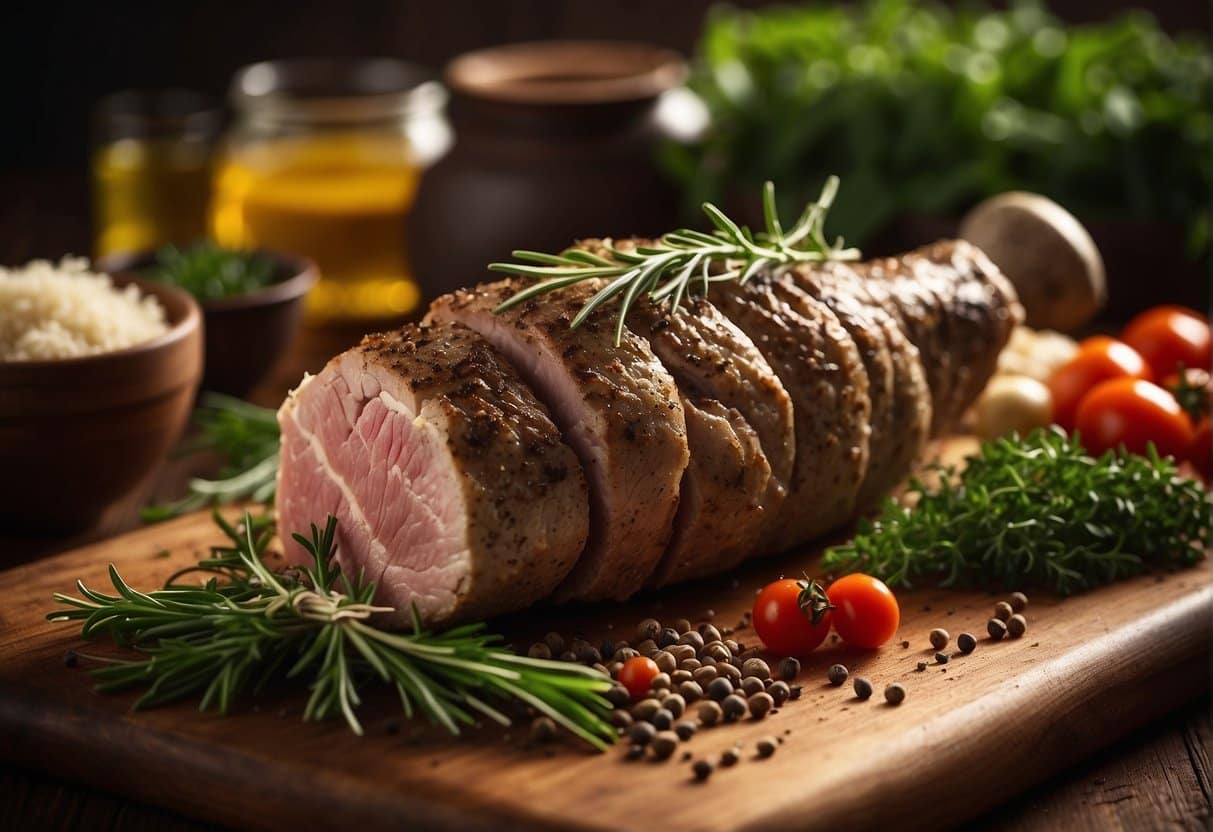
When preparing a cannon of lamb, the choice of ingredients and the correct preparation techniques are vital for creating a flavorful and tender dish. The quality of the meat and its seasoning will dictate the final taste, while careful preparation ensures the lamb is cooked to perfection.
Essential Ingredients
For my canon of lamb, I focus on simplicity to let the quality of the meat shine:
- Lamb: 1 cannon of lamb (approximately 2 pounds)
- Seasoning:
- Salt: I prefer fine sea salt for its clean taste
- Black pepper: Freshly ground for a piquant bite
- Fats:
- Olive oil: Extra virgin for searing the lamb
- Butter: A knob for basting
- Herbs:
- Rosemary: A couple of sprigs for their piney aroma
- Acids:
- Lemon: Juice for a touch of freshness
These ingredients are typically what I recommend for a balanced flavor profile that complements the lamb without overpowering it.
Preparation Techniques
The steps I follow are methodical to ensure the lamb is prepared with care:
- Room Temperature: Remove the lamb from the fridge an hour before cooking to bring it to room temperature.
- Seasoning:
- Generously season the lamb with sea salt and black pepper.
- Rub the meat with olive oil, crushed garlic (optional), and rosemary, allowing the flavors to infuse.
- Searing: Heat the olive oil in a pan and sear each side of the lamb for a caramelized crust.
- Roasting:
- Transfer to a preheated oven (check for specific temperature and time such as cooking it at 400 F).
- Baste with butter for additional flavor during roasting.
- Resting: After removing from the oven, let the lamb rest for at least 10 minutes before carving; this step is crucial for a juicy texture.
By adhering to these preparation techniques, each component of the dish is cooked optimally, bringing out the best in this succulent cut of lamb.
Cooking Process
Preparing a succulent cannon of lamb involves precise techniques to ensure it’s roasted to perfection. I’ll guide you through roasting and resting to carving.
Roasting the Lamb
When I’m ready to roast my lamb cannon, I make sure to preheat the oven to a high temperature, allowing the meat to cook evenly. I take the lamb out of the fridge and let it come to room temperature before cooking, which avoids a tough outer crust. The roasting process starts with a hot frying pan where I sear the lamb on all sides to brown it, locking in the juices and creating a delicious crust. It’s important to use a bit of vegetable oil and a knob of butter for flavor during this stage. Once browned, I transfer the lamb to the oven to roast.
- Preheat the oven to a high temperature, suggested 200°C (400°F).
- Sear the lamb in a frying pan with oil and butter until browned.
- Transfer to the oven and roast.
For exact timings, the lamb should be placed in the preheated oven and cooked for the time suitable for the desired doneness. For a medium-rare finish, I would roast the lamb for approximately 20 minutes per pound plus an additional 15-20 minutes. During roasting, I occasionally baste the meat with its juices to enhance the flavor and moisture.
Resting and Carving
After roasting, the meat needs to rest. This step is crucial as it allows the fibers to relax and reabsorb the juices that have been driven to the center. I usually rest my lamb for about 5 to 10 minutes before carving; this results in a more tender and juicy meal.
- Let the lamb rest out of the oven in a warm place.
- Rest for approximately 5 to 10 minutes.
When it’s time to carve, I always use a sharp knife to get clean slices and ensure the recipe retains its quality presentation. The cannon of lamb should be sliced against the grain to ensure each piece is as tender as possible. I carve it into thick slices, perfect for plating.
Remember, whether it’s been roasted, fried, or grilled, the resting and carving process remains a pivotal step to serving the perfect lamb dish.
Side Dishes and Accompaniments
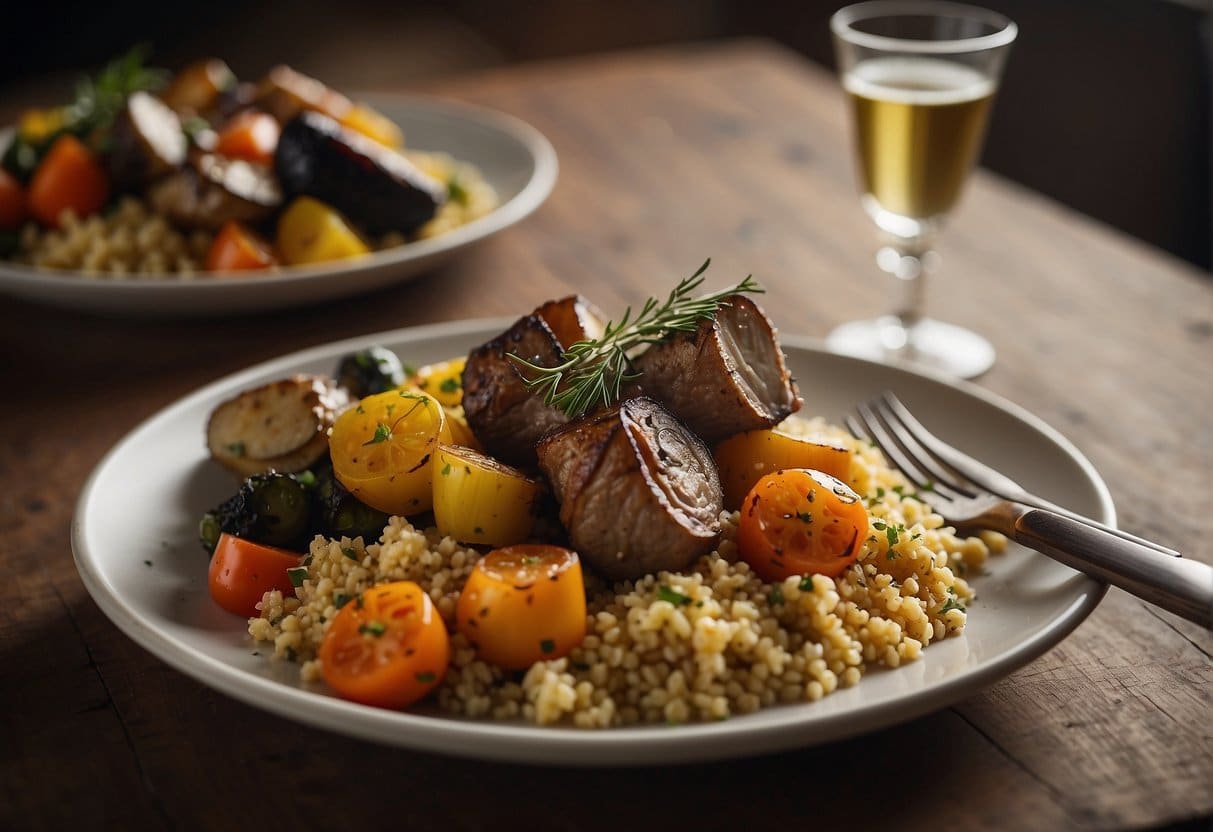
In my experience, the success of a cannon of lamb dish is greatly enhanced by its side dishes and the accompanying sauce. These components should complement the meat’s flavors and textures.
Vegetable Pairings
I often select vegetables that balance the richness of the lamb. My go-to choices include:
- Root vegetables: Roasted with olive oil and herbs.
- Quinoa salad: A refreshing mix of quinoa, fresh vegetables, and a light vinaigrette. This can be a healthy alternative to traditional starches.
- Potatoes: A classic pairing. Potatoes can be prepared in various styles, such as mashed with butter, or baked au gratin with cream and garlic.
For a festive touch, I sometimes opt for Potatoes Grand Mere, layering thinly sliced potatoes with heavy cream, Parmesan cheese, and mustard, all of which create a delicious harmony with lamb.
Creating a Sauce
A sauce can elevate the lamb to new heights, and I have crafted many over the years. Here’s my approach:
- Redcurrant Sauce: Begin with sautéing finely chopped shallots in butter. Once softened, add a generous spoonful of redcurrant jelly to melt into the shallots.
- Deglazing: I pour in a good splash of red wine, letting it simmer and reduce while scraping up the flavorsome bits from the pan.
- Stock: For depth, I stir in chicken or beef stock, occasionally adding a bit of port for complexity.
- Thickening: If needed, I’ll whisk in a small amount of flour to achieve the desired consistency.
Whether using a red wine and rosemary sauce or a more refined port reduction, the key is to complement the lamb without overpowering its natural flavors.
Seasonings and Flavors
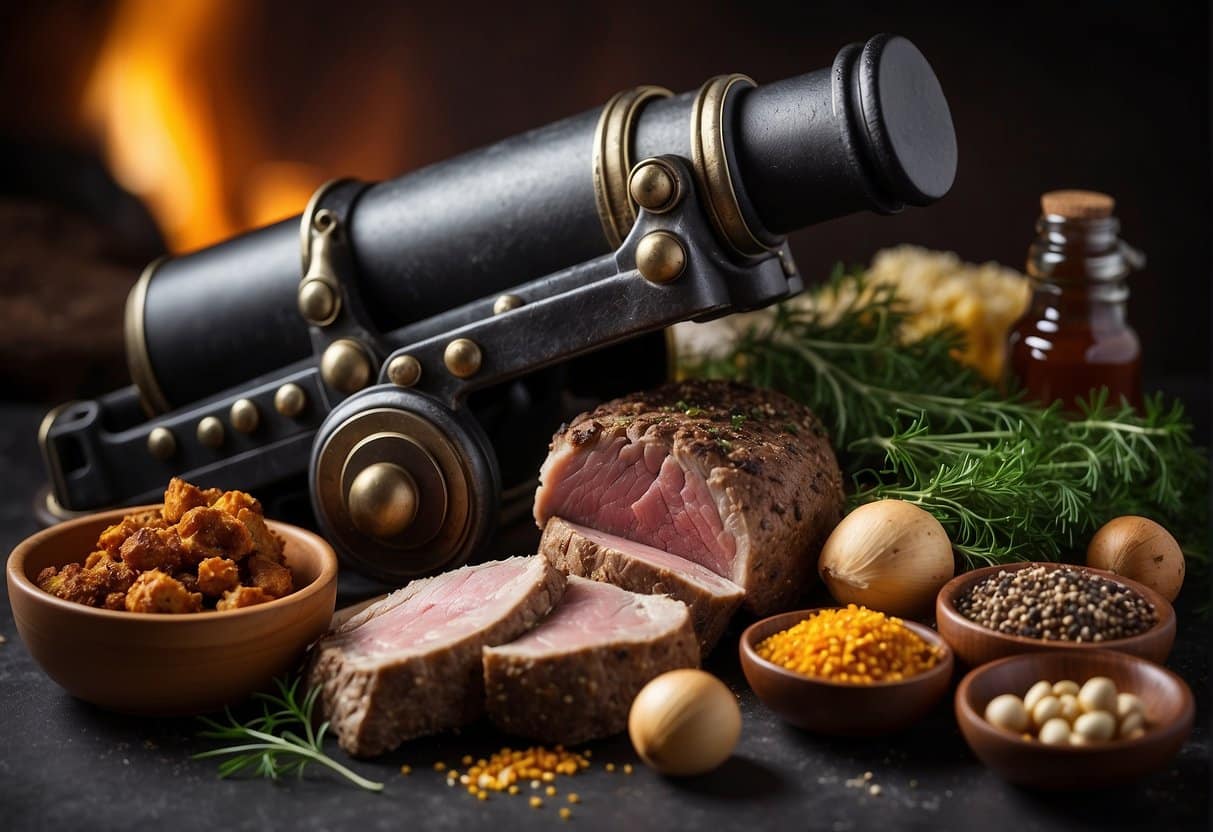
When I prepare a cannon of lamb, I emphasize a harmony of flavors that bring out its tender and succulent qualities. My approach is always measured, using precise quantities to avoid overpowering the natural taste of the lamb.
Herbs: Rosemary is a classic, with its versatile, earthy flavor pairing exceptionally well with lamb. I incorporate it both as a fresh sprig in the cooking process and finely chopped in a herb crust.
Mint provides a contrasting freshness that complements the richness of the meat. For a subtle hint, I ribbon fresh mint leaves and scatter them atop the dish before serving.
Garlic: My technique involves using just enough garlic to enhance the lamb’s flavor without dominating it. A clove or two, minced and rubbed onto the meat, suffices to infuse it with a welcoming warmth.
Citrus: Lemon zest is a game-changer. It injects a zesty, aromatic kick that cuts through the fat, delivering a refreshing lift. I’m careful to use the zest sparingly to prevent an overly citrusy profile.
| Seasoning | Quantity | Effect on Flavor |
|---|---|---|
| Rosemary | 1-2 sprigs | Adds earthy depth |
| Mint | A handful of leaves | Introduces a fresh, bright note |
| Garlic | 1-2 cloves | Provides a subtle warmth |
| Lemon Zest | 1 teaspoon | Contributes a clean, aromatic lift |
Salt & Pepper: Sea salt and freshly ground black pepper are the stalwarts of seasoning. They need to be present just enough to highlight the lamb’s natural flavors. I opt for a liberal pinch of sea salt and a twist or two of black pepper before searing the meat.
Lastly, I consider the power of butter, which I incorporate sparingly, allowing its richness to baste the lamb towards the end of cooking, granting it a gorgeous, glossy finish.
Finishing Touches
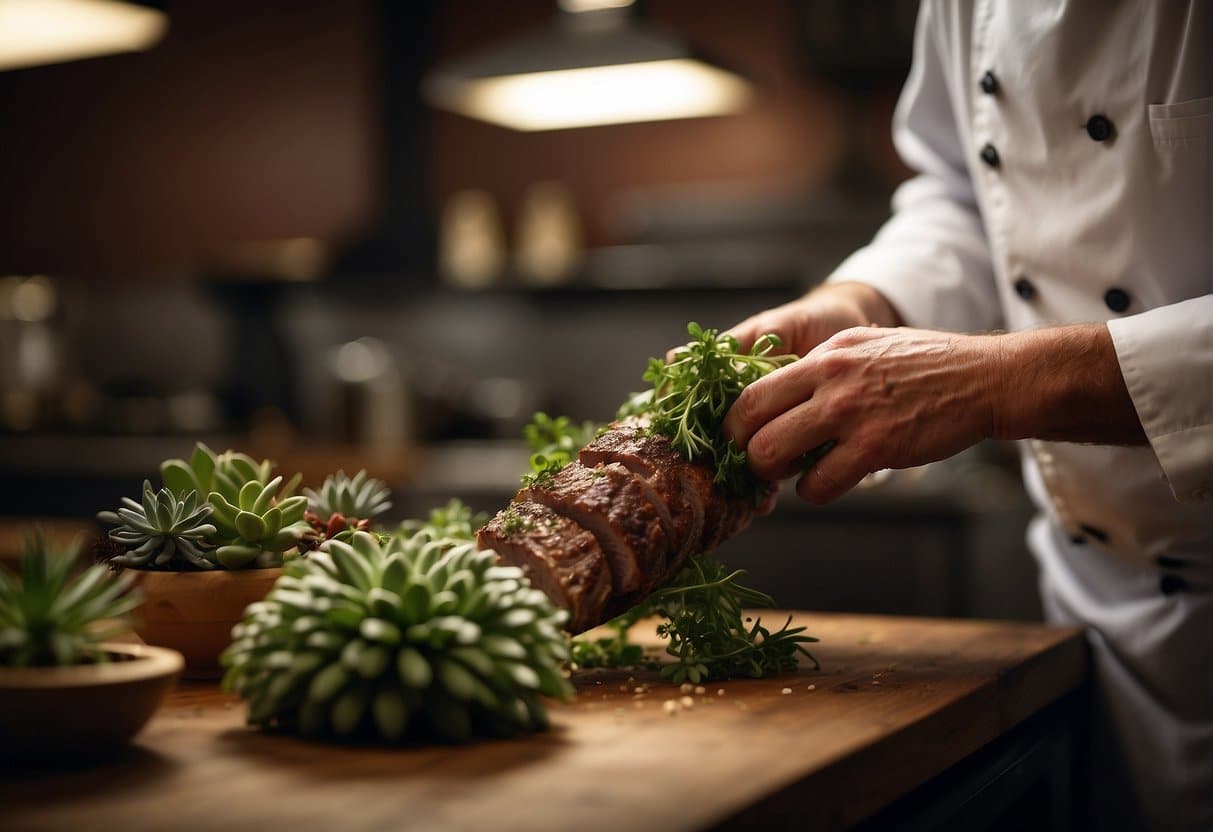
When I prepare cannon of lamb, I pay close attention to how I present and serve it. The aim is to enhance the delicious flavors of the meat with a thoughtful presentation that complements the accompanying vegetables and sauce.
Plating and Presentation
After allowing my cannon of lamb to rest, ensuring the juices redistribute for optimal tenderness, I begin plating. I always start by carving the lamb into elegant, even slices. It’s not just about the cut; it’s about the visual appeal as I lay them gracefully on the plate. I take care to arrange the slices with precision—each one overlapping the last just so, showcasing the succulent interior. For a vibrant aesthetic contrast, I garnish the lamb with sprigs of fresh herbs or edible flowers, which adds to the allure of the dish.
Serving Suggestions
When it’s time to serve, I accompany my cannon of lamb with a selection of seasonal vegetables. Each vegetable is chosen for its complementary flavor and prepared to highlight its natural textures, from roasted carrots to steamed green beans. A velvety sauce—perhaps a redcurrant reduction—sits alongside or is elegantly drizzled over the meat, infusing it with a rich, robust essence. I always ensure the sauce enhances but does not overpower the delicate flavor of the lamb. Pairing the lamb with the right side dishes and sauce turns a simple meal into a feast for the senses.
Wine and Beverage Pairing
When I prepare a cannon of lamb, I pay careful attention to selecting a beverage that complements its rich flavors. Red wine is a classic choice, as its robust profile harmonizes well with the meat’s savory depth. Specifically, I might opt for a Cabernet Sauvignon or a Bordeaux blend, which are known to balance the lamb’s succulence with their structured tannins and complex notes.
If I’m in the mood for something Italian, a bold Chianti could provide a pleasant acidity and cherry flavors, cutting through the meat’s richness. Sometimes, I might consider a Zinfandel to accompany more intensely flavored lamb dishes; the wine’s spiciness pairs well with herbs and a smoky char.
- Red Wine Pairings:
- Cabernet Sauvignon: Structured tannins, complements rich flavors
- Bordeaux: Complex notes, well-balanced
- Chianti: Pleasant acidity, cherry flavors
- Zinfandel: Spicy, good for smoky dishes
While less traditional, I don’t shy away from a sturdy white wine when it suits the preparation. A wine like Gewürztraminer or an oak-aged Chardonnay with substantial body can stand up to the lamb without being overpowered.
In terms of non-alcoholic beverages, a sparkling water with a squeeze of lemon or an aromatic rosemary-infused lemonade can offer a refreshing zest that cleanses the palate. Whether I choose a vintage red or a zingy lemonade, the right pairing elevates my dining experience, making every bite of cannon of lamb even more enjoyable.
Additional Tips and Tricks
In optimizing the preparation of a cannon of lamb, I’ll focus on selecting quality meat, ensuring tenderness, and enhancing flavor in a way that accentuates this exquisite cut.
Choosing Quality Lamb
When selecting lamb, opting for high-quality meat is paramount. I recommend looking for lamb that displays a healthy pink color, has a firm texture, and is marbled with fat, as this enhances juiciness and flavor. A reputable butcher can advise on the various cuts of lamb and their best uses.
Optimizing Meat Tenderness
To ensure tenderness, I always let the lamb rest at room temperature for about 30 minutes before cooking. This brings the meat to an even temperature, which facilitates consistent cooking. Remember: a sudden change in temperature can cause it to seize up and toughen.
Enhancing Flavor with Butter
For an enhanced flavor, consider adding a knob of butter towards the end of cooking. As I baste the lamb with butter, it not only adds richness but also browns the outside for a perfect finish. In my newsletter, I often emphasize how a simple act of basting can elevate the lamb’s flavor profile significantly.
Frequently Asked Questions
In this section, I’ll address common queries about cooking cannon of lamb, from ideal cooking times to preparing the perfect red wine and redcurrant jus. My goal is to offer clear, precise guidance to enhance your culinary experience with this premium cut of meat.
What is the recommended cooking time for a cannon of lamb in an oven?
For a juicy and tender cannon of lamb, I recommend roasting it in a preheated oven at 190°C (375°F) for about 20 to 25 minutes per pound. Keep in mind that oven temperatures may vary, so it’s wise to use a meat thermometer to check for doneness.
How can I prepare a cannon of lamb using a slow cooker?
When using a slow cooker, first brown the cannon of lamb in a skillet to develop flavor. Then, cook it on low for about 6 to 8 hours. The slow cooking process will ensure that the lamb is delicately tender and full of depth.
What is a good recipe for red wine and redcurrant jus to accompany cannon of lamb?
I like to make a red wine and redcurrant jus that’s rich and flavorful. It involves reducing red wine with redcurrant jelly and stock, seasoned with rosemary, until it forms a syrupy consistency. It perfectly complements the lamb’s succulent taste.
What are the differences between a cannon of lamb and a saddle of lamb?
The cannon of lamb is a boneless loin rolled into a neat joint, while the saddle of lamb includes both loins with the backbone. The saddle is larger and includes more fat, making it ideal for roasting and serving a crowd.
How do I prevent overcooking lamb loin when preparing it?
To prevent overcooking, remove the lamb from the oven when it’s about 5-10 degrees below the desired internal temperature. It will continue cooking from residual heat. Resting it for at least 10 minutes is also key to a perfectly juicy result.
What temperature should cannon of lamb be cooked to ensure it’s done properly?
A cannon of lamb should be cooked to an internal temperature of 58°C (135°F) for medium-rare. If you prefer medium, aim for 63°C (145°F). Always let it rest before slicing to ensure the juices redistribute for maximum tenderness and flavor.


